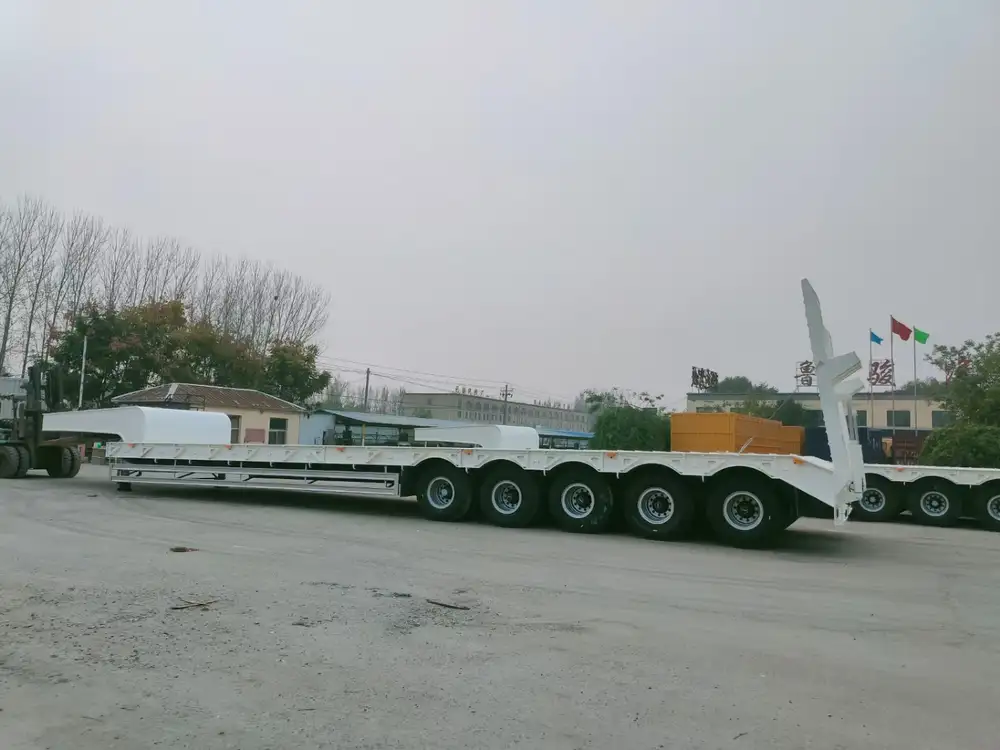The topic of chemtrails has incited considerable debate and speculation, particularly concerning their potential hazards to health and the environment. As a leading manufacturer in the semi-trailer industry, we understand the importance of addressing public concern and offering factual insights while navigating complex topics like these. This article aims to provide a comprehensive exploration of the question, “Do chemtrails contain biohazards?” by examining various perspectives, scientific studies, and public debates surrounding this modern phenomenon.
Understanding Chemtrails vs. Contrails
Definitions and Differences
| Term | Definition |
|---|---|
| Chemtrails | A conspiracy theory alleging that governments or other entities are releasing harmful chemicals into the atmosphere. |
| Contrails | Water vapor trails produced by aircraft engines at high altitudes, which condense and form clouds. |
The distinction between chemtrails and contrails is crucial for understanding the controversy surrounding these phenomena. Whereas contrails are scientifically recognized as harmless atmospheric condensation, chemtrails are alleged to be part of a covert operation with potentially harmful agents.

The Emergence of Chemtrail Theories
Historical Context
The roots of chemtrail theories can be traced back to the late 1990s, coinciding with increased anxiety about environmental hazards and government transparency. The visual presence of persistent trails in the sky led many to speculate about artificial modifications of the atmosphere for various purposes, such as weather modification, population control, and even biowarfare.
Public Perception and Popular Media
The proliferation of the internet has allowed these theories to gain traction. Social media platforms and websites dedicated to conspiracy theories further spread the notion that particular trails in the sky signify something nefarious. For many, a lack of credible information from authoritative sources compounded these fears, escalating public apprehension.

Investigating Biohazards Associated with Chemtrails
A Closer Look at the Claims
At the heart of the inquiry regarding chemtrails lies the concern about biohazards—substances that pose a threat to human health or the environment. Proponents of the chemtrail narrative often assert that the trails contain harmful agents like heavy metals, biological agents, and various toxic substances. Key claims include:
- Aluminum and Barium: Some studies have suggested that these elements disproportionately appear in soil samples in areas beneath flight paths.
- Biological Agents: Allegations of pathogens being released into the atmosphere as part of a more comprehensive bioweapon system.
Scientific Rebuttals
Numerous investigations conducted by reputable scientific organizations and environmental agencies debunk these claims. Here’s a structured overview of the rebuttals:
| Claim | Evidence Against Claim |
|---|---|
| Aluminum in soil | Natural geological processes can account for aluminum presence. |
| Barium levels | Generally found in trace amounts, linked to natural sources like seawater. |
| Biological agents | No empirical evidence supports the idea that pathogens are aerosolized purposefully. |
Researchers predominantly maintain that if chemtrails exist, they conform to typical aviation practices which do not include harmful substances.

The Role of Atmospheric Science
Expert Opinions
Atmospheric scientists actively study contrails and their effects on weather patterns. Contrails can contribute to cirrus cloud formation, which might impact local climates. However, ongoing research emphasizes that:
- Contrails are not harmful: Scientific consensus indicates that they consist mainly of water vapor.
- Environmental impacts are minimal: While there may be localized temperature changes associated with cloud cover, these are attributed to natural climate variability rather than the presence of toxic substances.
Studies and Findings
Recent studies have explored climate modulation and air quality impacted by aviation:
- NASA and NOAA Reports: These agencies have documented the role of contrails in climate effects without any evidence of harmful chemicals being involved.
- Environmental Monitoring: Ongoing surveillance of air quality shows no abnormal levels of biohazards attributable to aircraft emissions.

Addressing Public Concerns on Health Impacts
Health Implications of Contrails
Given the fears surrounding potential biohazards, it is essential to address the perceived health implications. Reviews of existing literature present the following insights:
- Respiratory Concerns: Air pollution is a genuine health issue, though it is primarily linked to urban areas and industrial activities—not aircraft emissions of controlled substances.
- Community Health Studies: Local health studies in regions near airports indicate no correlation between contrail presence and chronic health concerns.
Misinformation vs. Reality
The dissemination of misinformation can lead to heightened anxiety. The conflation of regular contrails with harmful chemtrails cultivates a stigma against aviation as a potential environmental threat.

Environmental Policies and Regulations
Aviation and Environmental Safety
Government and environmental bodies are proactive in monitoring and regulating the aviation industry to mitigate its impact on the environment. Key policies include:
- Emissions Standards: Regulations are in place globally to reduce aircraft emissions of nitrogen oxides, particulates, and more.
- Monitoring Programs: Extensive air quality monitoring systems detect pollutants in the atmosphere, ensuring compliance with health guidelines.
The Role of Transparency
Engagement with the public about aviation practices and environmental health can serve as a countermeasure against conspiracy theories. Authorities can improve transparency around:
- Research efforts regarding atmospheric changes,
- The safety profile of aviation operations,
- Clear communication regarding the difference between chemtrails and contrails.

Conclusion: Bridging the Gap Between Science and Concern
The discussion surrounding chemtrails and biohazards emphasizes the importance of clarity in scientific communication. As a society, defining terms and grounding debates in scientific fact helps alleviate public fears. The evidence heavily suggests that what many identify as chemtrails are, in fact, innocuous contrails. Addressing concerns through research, transparency, and participation in meaningful dialogue is essential.
By focusing on factual information rather than speculative narratives, we can overcome the confusion surrounding this topic. Engaging with scientific literature, governmental transparency, and community resilience will lead to more informed public attitudes concerning our environment and health.
Takeaways
Fostering understanding requires commitment and adaptability. While it is easy to fall prey to sensationalized narratives in this age of information overload, relying on reputable sources and scientific findings can illuminate the path forward.
- Stay Informed: Keep abreast of scientific studies and government reports on aviation and environmental impact.
- Educate Others: Share factual information and resources that clarify the distinctions between chemtrails and contrails.
- Engage with Experts: Participate in discussions led by atmospheric scientists and environmental experts for deeper insights.
For manufacturers in various sectors, including the semi-trailer industry, it is crucial to not only acknowledge public concerns but also to provide insight grounded in facts that promote sustainable practices and community well-being.



